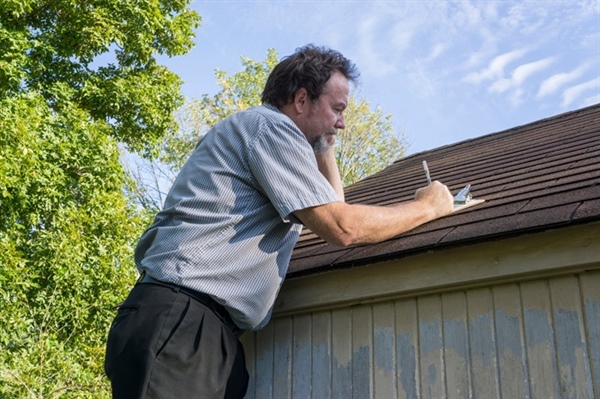Know the Steps to Take After Discovering Hail Damage On Your Roof

In this guide, we’ll explore the steps you should take after discovering hail damage on your roof, with a focus on assessing the damage, contacting professionals, and preparing the necessary documentation for your insurance claims.
Hailstorms can cause significant damage to your roof, and discovering this damage early is essential to protect your home from further issues. Knowing what to do immediately after a hailstorm can help you avoid costly repairs and ensure that your insurance claim is processed efficiently. Each step is critical in preventing minor damage from escalating into larger problems.
From understanding how to safely inspect your roof from the ground to recognizing the risks of ignoring even small hail damage, this article covers the essential actions homeowners should take, including:
-Learn the importance of contacting the right professionals for a thorough assessment and how the weather forecast can impact repair decisions.
-Get a list of the documentation required for submitting a successful insurance claim for hail damage.
How can you safely assess hail damage from the ground?
After a hailstorm, it's crucial to assess the damage to your roof, but safety should always come first. The best way to start is by inspecting the roof from the ground.
Look for signs of damage such as dents on metal surfaces like gutters and downspouts, missing or cracked shingles, and any visible impact on roof accessories such as vents or skylights. Using binoculars can help you get a closer look without climbing onto the roof, which can be dangerous without the proper equipment.
Additionally, check your surroundings for any other signs of hail damage, such as dents on vehicles, siding, or outdoor furniture. These indicators can give you a better idea of the extent of the damage on your roof.
If you suspect damage but cannot see it clearly, it’s best to contact a roofing professional for a thorough assessment.
What are the risks of ignoring minor hail damage on your roof?
While it may be tempting to ignore small dents or a few missing shingles after a hailstorm, doing so can lead to more severe problems over time. Minor hail damage can weaken your roof’s integrity, allowing water to seep into your home.
Over time, this can result in leaks, mold growth, and even structural damage. Small issues can snowball into larger, more expensive repairs if not addressed promptly.
In addition to the physical damage, insurance companies may also be less likely to cover repairs if the damage is not reported immediately. Ignoring the problem could mean you're left paying out of pocket for repairs that would have otherwise been covered.
Understanding the risks of overlooking minor hail damage is essential to maintaining your roof’s health and avoiding long-term issues.
Which professionals should you contact for a hail damage assessment?
When it comes to assessing hail damage, it’s important to contact experienced professionals who specialize in roofing inspections and repairs.
A licensed roofing contractor is your first point of contact, as they can perform a detailed inspection of your roof to identify any damage that may not be visible from the ground. Additionally, it may be beneficial to involve a public adjuster who can help you assess the extent of the damage and ensure that your insurance claim is handled fairly.
You should also consider contacting your insurance company to report the damage as soon as possible. They will typically send out an insurance adjuster to assess the damage for coverage purposes.
Having both a roofing professional and an adjuster on-site will help ensure you get a comprehensive assessment.
How does the weather forecast impact immediate repair actions?
The weather forecast plays a significant role in deciding when to carry out roof repairs after hail damage.
If more storms are predicted, it’s wise to take immediate temporary measures to protect your roof, such as installing tarps or covering exposed areas. However, these should only be short-term solutions until proper repairs can be made.
Timing is also crucial when scheduling repairs. Roofing contractors are often booked heavily after a storm, so checking the weather forecast helps you plan the best time for a repair that won’t be interrupted by further weather issues.
Staying informed of upcoming weather conditions ensures that your roof remains protected and reduces the chances of additional damage.
What documentation is essential for insurance claims related to hail damage?
Proper documentation is crucial when filing an insurance claim for hail damage.
Start by taking clear photographs of the damage from multiple angles, both before and after any temporary repairs. Keep records of any temporary fixes you implement, such as receipts for tarps or other materials used to cover exposed areas.
Additionally, you should get a detailed report from your roofing contractor outlining the extent of the damage and the estimated cost of repairs.
Make sure to file your claim as soon as possible and provide all requested documentation to your insurance company. The sooner you submit your claim, the faster it can be processed, ensuring timely repairs to your roof.
If you need more help understanding the insurance claim process, reach out to Olson Construction & Remodeling for assistance with the necessary documentation.
At Olson Construction & Remodeling, we understand the stress that comes with discovering hail damage on your roof. Our experienced team is here to help you through every step of the process, from assessing the damage to providing the necessary repairs. Whether you're looking for a thorough damage assessment, expert repair services, or assistance with filing insurance claims, our team is ready to guide you.
If you have questions about the initial steps to take after discovering hail damage, or if you need a professional inspection, don't hesitate to contact us: 651-279-2590.